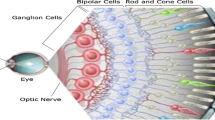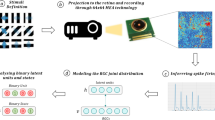Abstract
This paper exploits how Bayesian learning of restricted Boltzmann machine (RBM) can discover more biologically-resembled early visual features. The study is mainly motivated by the sparsity and selectivity of visual neurons’ activations in V1 area. Most previous work of computational modeling emphasize selectivity and sparsity independently, which neglects the underlying connections between them. In this paper, a prior on parameters is defined to simultaneously enhance these two properties, and a Bayesian learning framework of RBM is introduced to infer the maximum posterior of the parameters. The proposed prior performs as the lateral inhibition between neurons. According to our empirical results, the visual features learned from the proposed Bayesian framework yield better discriminative and generalization capability than the ones learned with maximum likelihood, or other state-of-the-art training strategies.
The authors would like to thank Dr. George Azzopardi for his helpful comments. The research leading to these results has received funding from the European Community’s Seventh Framework Programme FP7/2007-2013 (Specific Programme Cooperation, Theme 3, Information and Communication Technologies) under grant agreement no. 270273, Xperience.
Access this chapter
Tax calculation will be finalised at checkout
Purchases are for personal use only
Preview
Unable to display preview. Download preview PDF.
Similar content being viewed by others
References
Barlow, H.B.: Unsupervised learning. Neural Computation 1, 295–311 (1989)
Berkes, P., White, B., Fiser, J.: No evidence for active sparsification in the visual cortex. In: NIPS, pp. 108–116 (2009)
Earl, D.J., Deem, M.W.: Parallel tempering: Theory, applications, and new perspectives. Phys. Chem. Chem. Phys. 7, 3910–3916 (2005)
Franco, L., Rolls, E.T., Aggelopoulos, N.C., Jerez, J.M.: Neuronal selectivity, population sparseness, and ergodicity in the inferior temporal visual cortex. Biological Cybernetics 96(6), 547–560 (2007)
Goh, H., Thome, N., Cord, M.: Biasing restricted Boltzmann machines to manipulate latent selectivity and sparsity. In: NIPS Workshop on Deep Learning and Unsupervised Feature Learning (2010)
van Hateren, J.H., van der Schaaf, A.: Independent component filters of natural images compared with simple cells in primary visual cortex. Proceedings of the Royal Society B: Biological Sciences 265(1394), 359–366 (1998)
Hinton, G.E., Salakhutdinov, R.R.: Reducing the dimensionality of data with neural networks. Science 313(5786), 504–507 (2006)
Lee, H., Ekanadham, C., Ng, A.Y.: Sparse deep belief net model for visual area V2. In: NIPS (2007)
Luo, H., Shen, R., Niu, C., Ullrich, C.: Sparse group restricted boltzmann machines. In: AAAI (2011)
Olshausen, B., Field, D.: Emergence of simple-cell receptive field properties by learning a sparse code for natural images. Nature 381, 607–609 (1996)
Salakhutdinov, R., Murray, I.: On the quantitative analysis of deep belief networks. In: ICML (2008)
Willmore, B., Tolhurst, D.: Characterising the sparseness of neural codes. Network: Comput. Neural Syst. 12, 255–270 (2001)
Author information
Authors and Affiliations
Editor information
Editors and Affiliations
Rights and permissions
Copyright information
© 2014 Springer International Publishing Switzerland
About this paper
Cite this paper
Xiong, H., Szedmak, S., Rodríguez-Sánchez, A., Piater, J. (2014). Towards Sparsity and Selectivity: Bayesian Learning of Restricted Boltzmann Machine for Early Visual Features. In: Wermter, S., et al. Artificial Neural Networks and Machine Learning – ICANN 2014. ICANN 2014. Lecture Notes in Computer Science, vol 8681. Springer, Cham. https://doi.org/10.1007/978-3-319-11179-7_53
Download citation
DOI: https://doi.org/10.1007/978-3-319-11179-7_53
Publisher Name: Springer, Cham
Print ISBN: 978-3-319-11178-0
Online ISBN: 978-3-319-11179-7
eBook Packages: Computer ScienceComputer Science (R0)




